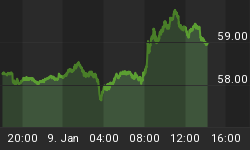Friday's Report Helps Investors Feel More Confident

We have been stating for some time the Federal Reserve was using quantitative easing (QE) as monetary lighter fluid to get the economic fire started again. The Fed desperately wants to cut back on monetary injections and pass the baton to the economy. Right or wrong longer-term, if the market's pricing mechanism (aggregate opinion of all investors) perceives the economy is strong enough to take the baton from the Fed, it is bullish for equities. Perception sets asset prices. Friday's GDP report helped strengthen bullish perception. From USA Today:
Spending by consumers helped drive the U.S. economy to better than expected 4.1% growth between July and September. The growth rate, the highest since Oct.-Dec. 2011, was spurred by consumers spending more over the summer on health care, recreation and other services. Consumers also spent more than expected on nondurable goods, mainly gasoline and energy.
Credit Markets Have Remained Optimistic
We recently outlined the rationale behind reviewing the chart below as a risk monitoring tool for the economy. When market participants calculate bond default probabilities, they include an assessment of the economy. If the odds of a recession are low, then the odds of widespread bond defaults are also low - an environment where higher yield (JNK) is in greater demand than safety/return of principal (TLT). The chart below reflects a greater demand for JNK and is indicative of bullish economic confidence. How did the chart below look in October of 2007, just before the stock market peaked? A 2007 chart can be found here.

Have The Bulls Reached An Exhaustion Point?
The brief video below compares the major stock market peaks in 2000 & 2007 to 2013 using a process and proprietary tools developed by Tom DeMark (Market Studies, LLC). DeMark's counts tell us when the probability of trend exhaustion reaches "it is time to pay attention" levels.
Investment Implications - Economic Momentum Building
The best time to invest from a probabilistic perspective is when the fundamentals and technicals align in a bullish manner. The charts stabilized this week, a topic to be covered in this weekend's video, and the economy is trying to grab the baton from the Fed. From USA Today:
The GDP report suggests that the U.S. economy entered the fourth quarter of this year "with more momentum than had previously been thought to be the case," said Richard Moody, chief economist of Regions Financial Corp.' in a note after the Commerce Department released the report Friday. "And we expect that momentum to build further in 2014."
Our market model began adding to our long holdings Thursday based on observable improvement in the market's risk-reward profile. An example of observable improvement is the break of the downward-sloping trendline near point A below, and the higher high made in the Dow Thursday (point B).

If Friday's GDP-induced gains can carry into the close, our rules will call for another incremental increase in our allocation to equities. We will head into next week holding U.S. stocks (VTI), financials (XLF), energy (XLE), small caps (IWM), technology (QQQ), and global stocks (VT).















